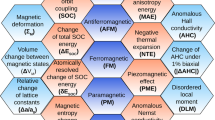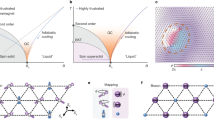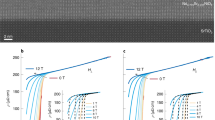Abstract
MAGNETIC coupling of next-to-nearest neighbours through a non-magnetic anion (super-exchange) has been explained by Anderson1 by considering ‘excited states’ in which a single electron in a p-orbital of the anion is transferred to one of the neighbouring cations. Goodenough and Loeb2 have emphasized correctly that such interactions are essentially covalent and have given the name ‘semi-covalence’ to Anderson's one-electron transfer. As stressed by Goodenough and Loeb, the increase in Curie or Néel temperatures in series such as MnO-FeO-CoO-NiO, or MnO-MnS-MnSe-MnTe, is evidence for the part played by covalence in magnetic coupling.
This is a preview of subscription content, access via your institution
Access options
Subscribe to this journal
Receive 51 print issues and online access
$199.00 per year
only $3.90 per issue
Buy this article
- Purchase on SpringerLink
- Instant access to full article PDF
Prices may be subject to local taxes which are calculated during checkout
Similar content being viewed by others
References
Anderson, P. W., Phys. Rev., 79, 350 (1950).
Goodenough, J. B., and Loeb, A. L., Phys. Rev., 98, 391 (1955).
Author information
Authors and Affiliations
Rights and permissions
About this article
Cite this article
FYFE, W., VERHOOGEN, J. Covalent Super-Exchange in Solid State Physics. Nature 187, 1108 (1960). https://doi.org/10.1038/1871108a0
Issue date:
DOI: https://doi.org/10.1038/1871108a0



